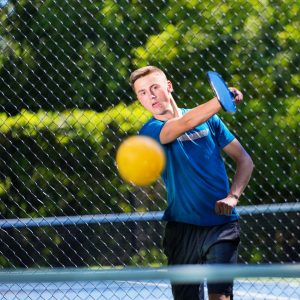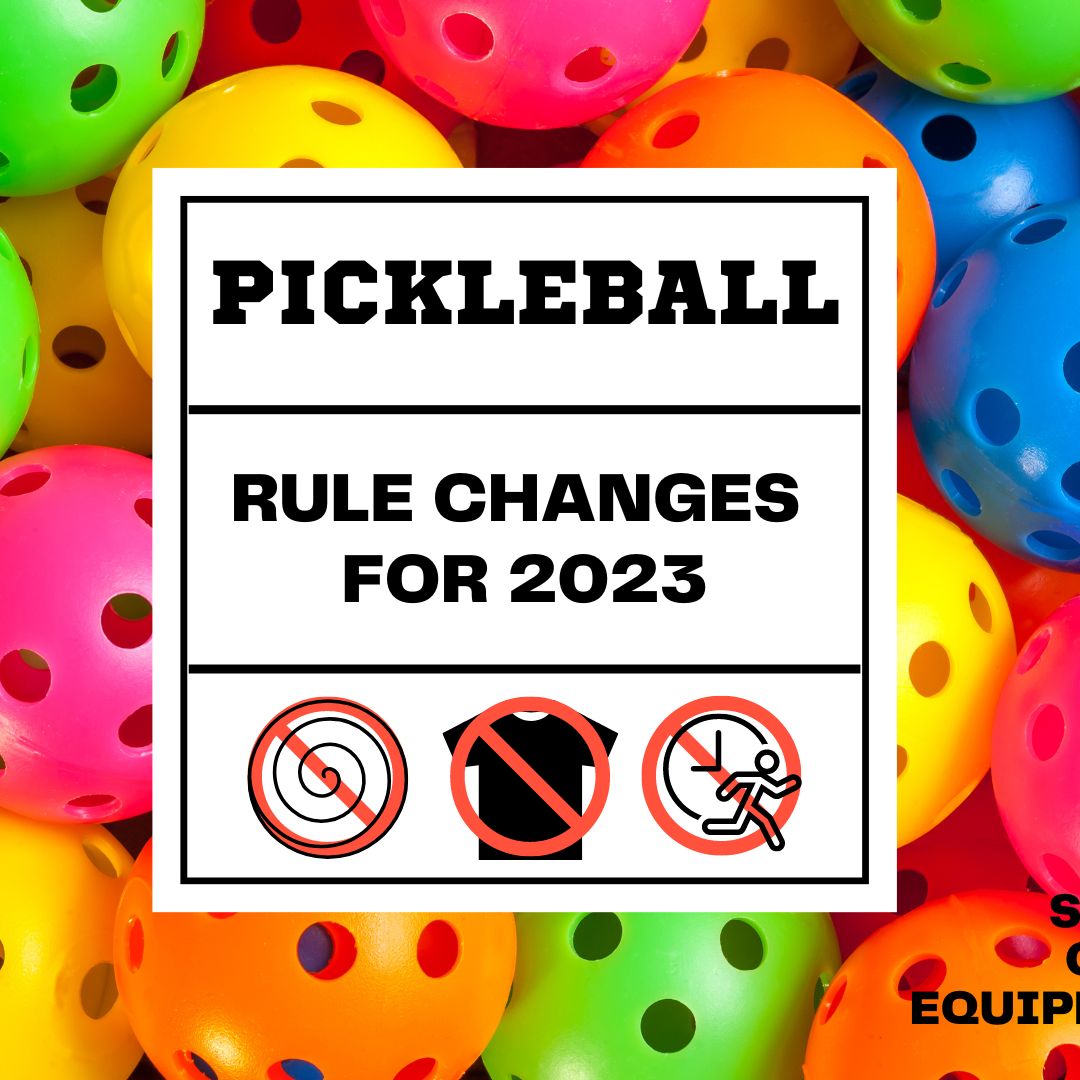Depending on how you look at it, Pickleball rules either got a little easier to understand or they just got more complicated. That’s because several of the 78 rules proposed to USA Pickleball (the governing board for the sport) passed. Each year pickleball players have the opportunity to suggest changes to improve the game. The board, along with a rules committee scrutinizes the suggestion, compares them to current rules, and votes on whether or not they’re approved. Here are some new pickleball rules that go into effect on January 1, 2023.
Pickleball Rules Change to Serve

There were a couple of changes made to the serves. One of the biggest eliminates the Spin Serve. This rule was proposed in an effort to level the playing field. A spin serve was found to be too effective. That’s right, you read that correctly, putting a spin on the serves ended the point prematurely. The idea behind Pickleball is to rally the ball and have several exchanges during a point. Because it’s difficult to master the return of serve with a spin on the ball, and since this type of serve requires more court space on the receiving side, Rule # 4.A.6.b was edited. It now reads, “The ball shall not be propelled (thrown) downward or tossed or hit upward with the paddle. The ball may not be spun during its release.”
Another change was to the Volley Serve. This updated rule requires servers to use only one hand to release the ball to perform the serves. If the ball is visibly seen by a referee or the receiver to have spun during the serve, the point shall be replayed. They also included a short list of different scenarios where drop serves, lob serves, and power serves were not impacted by this rule change.
Clothing Color

When it comes to clothing on the court, pickleball players have their own set of fashion rules. There are fun and colorful clothing worn on the court, however, it can sometimes match the ball. This rule clarifies that a Pickleball Tournament Director can request an apparel change from participants whose clothing matches the ball. Keep in mind that indoor and outdoor plastic balls come in a variety of colors. This rule now clarifies that a player should not intentionally choose clothing that is the same color as the ball. It can be found in its entirety in the Players Section on Page 1 of the handbook.
It doesn’t carry any weight, so there’s no penalty for breaking this rule. On the flip side, pickleball is a game of cooperation and courtesy. If your opponents are not respecting this simple rule, you have to ask yourself what else are they choosing to ignore?
Equipment Time-Outs

Pickleball equipment is an essential part of the game. Players are expected to keep their gear in good working order or use existing time-outs to switch out faulty paddles or equipment. The board and rules committee voted unanimously to update Rule # 10.D to read, “If the referee determines that an equipment change or adjustment is necessary for fair and safe continuation of the match, the referee may award an equipment time-out of a reasonable duration.” Originally a two-minute time limit was assigned, but it was removed from the rule. For non-officiated matches, players can agree on what to do in the case of malfunctioning equipment.
Some of the reasoning behind this change has to do with how equipment time-outs are handled. In the past, there have been inconsistencies at tournaments across the U.S. In order to avoid favoritism, this rule modification gives referees the ability to use their best judgment in circumstances beyond a player’s control such as a broken paddle or sunglasses.
Players hit by the ball
Again, this is more of an amendment rather than a new rule. It affects Rule # 7.H and 7.I. It puts the onus on the player who is hit by the ball or who stops the ball in play. Once the ball is served it should not have contact with anything but the player’s paddle. In other words, the ball can’t touch a player’s body, hair, clothing, shoes, or so on. The change reads, “If the player is in the process of changing hands with both hands on the paddle or is attempting a two-handed stroke and either hand is hit below the wrist, as long as the player’s hand(s) are in contact with the paddle, the ball is still in play,” adding, “The fault is on the player who was hit by the ball.”
The second part of the rule states if a live ball is stopped by a player before it becomes dead, such as someone catching it in mid-flight, it will be the fault of the player who stopped the ball. When these rules were originally established it was ambiguous as to who was at fault.
Questioning an Opponent’s Call
Despite some opposition, Rule # 6.D.5 was approved to edit. It basically states that a player should not question or comment about an opponent’s call. It does allow them to appeal to the referee but they must do so prior to the next serve occurring. There is some concern about this rule because it’s not enforceable. It also comes with no penalty, such as the loss of a point. Instead, it outlines how a player should behave in the event of a questionable call. Granted, some players take the rules out of context and don’t ask, “Are you sure?” rather than blurting out the way they saw it. Nonetheless, if it’s a friendly game, why not ask to replay the point?
Additional Pickleball Rules in 2023

Other rules that were updated had to do with clarifying Round Robin tie-breakers, time-outs for apparel changes, addressing when the wrong score is called, and service foot fault wording.
A partially approved rule applied to questions about service sequence and player positions. It was Rule # 4.B.8 and it allows referees to stop play when a player correctly identifies a player who is out of position or when they notice an incorrect service order. Instead of this being a fault it now gives players the opportunity to replay the point.
Lastly, a notable change has to do with when a pickleball ball is degraded but not yet cracked. It points out that players can appeal to a referee to determine if a ball is compromised. Otherwise, if no referee is present, both teams can agree to replace a defective ball, but only between points. If a player suspects the ball is damaged during play, they must continue playing the point until the end of the rally. If the players do not agree that a cracked ball impacted the outcome of the rally, the rally stands as played. Like many of the rules listed above, this one is subjective and requires players to make a fair judgment.
Stay up to date with all of the latest Pickleball gear, shoes, and apparel at TennisExpress.com.
Check out these Resources:





